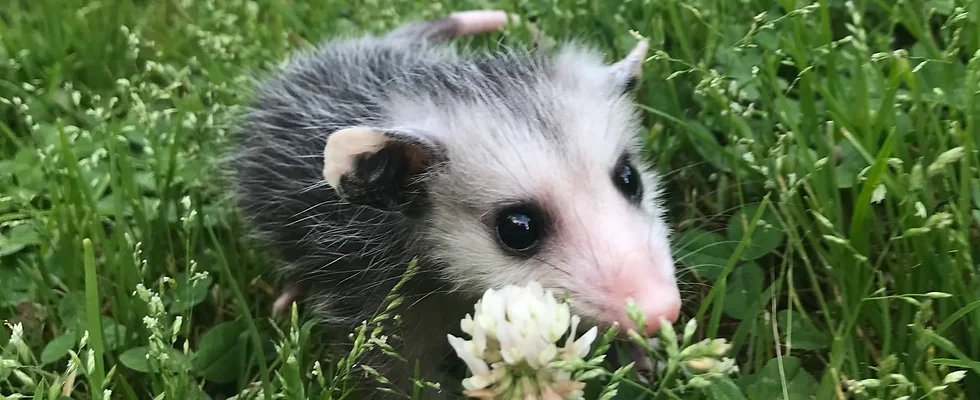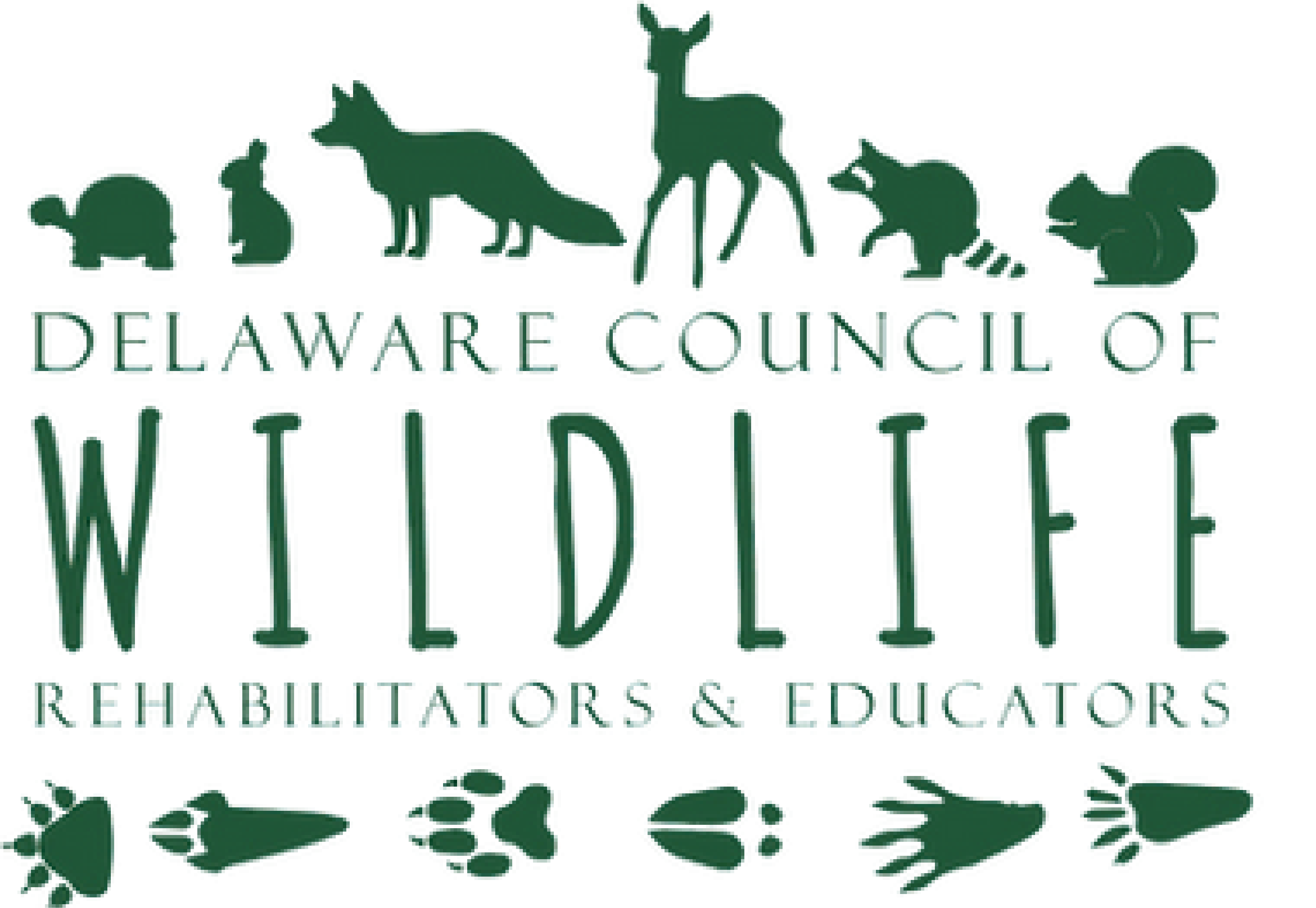
Virginia Opossum (Didelphis virginiana)
North America’s only native marsupial
Rehab Criteria: Baby opossums are born as embryos, barely larger than a bee, and spend about two months nursing in their mother’s pouch. When they get to be about three to four inches long and start riding around on their mother's back, they may fall off without the mother noticing. As a general rule, if an opossum is over seven inches long (not including the tail), they're old enough to be on their own. If they're less than seven inches long (not including the tail), they are orphaned and you should contact us for assistance. Opossums lying dead along the road may be carrying live young, when conditions are safe and appropriate to do so, the pouch can be checked. If you are uncomfortable removing any young from the pouch, pick up the dead female and call a wildlife rehabilitator.
When rescuing small wild animals, it’s a good idea to wear gloves. Be aware, however, that gloves provide only a small amount of protection, and that most mammals can easily bite through them. Raccoons, skunks, bats and some foxes are more likely than other mammals to carry rabies, but any wild animal may carry the disease. There are a number of other serious or fatal diseases that can be transmitted to humans, so you must take care that the animal doesn’t bite you.
Physical characteristics: Heavyset body, long head, pointy nose, rounded/hairless/black ears. Long, semi-prehensile tail; five toes on each foot (opposable toe on hind feet; long, coarse white/gray/black fur.
Up to 14 pounds as an adult
Up to 40 inches long nose to base of tail (males are usually larger than females)
Lifespan: 1.5 – 3 years in the wild (3 years is unusual)
Habitat: Woodlands, farmlands, swamp, suburban areas. Shelters in old dens, beneath buildings, in hollowed trees/logs, brush piles
Diet: Omnivore - Opportunistic omnivores: small mammals, bird eggs, insects, worms, plant material, fruit, seeds, carrion, small reptiles or amphibians. Opossums will also consume human trash (food scraps) giving them the nickname of “trash panda”
Family life: polygynous, young are born January to September with 2-3 litters per year with up to 13 babies per litter (average of 7-8 survive to adulthood). Babies are born in the female’s birth canal and must crawl into pouch and attach to a nipple. Infants stay in the pouch for two months before they begin to crawl out and ride on mom’s back (holding on to her fur while she searches for food. Babies are weaned at approximately three months and are independent at approximately four months old.
Predators: Raptors, foxes, coyotes, bobcats
Other significant threats: cats, dogs, humans (especially automobiles)
Special considerations/Interesting facts: They have more teeth than any other mammal in North America. Their greatest method of protection is “playing dead” as most predators will not eat an animal that is already dead. It will sometimes try to “bluff” a predator by baring their teeth and hissing. They are nocturnal. They are very susceptible to frostbite.
